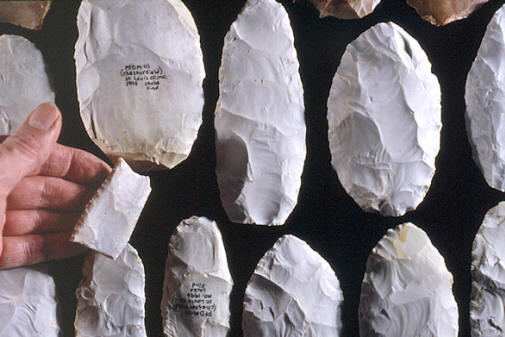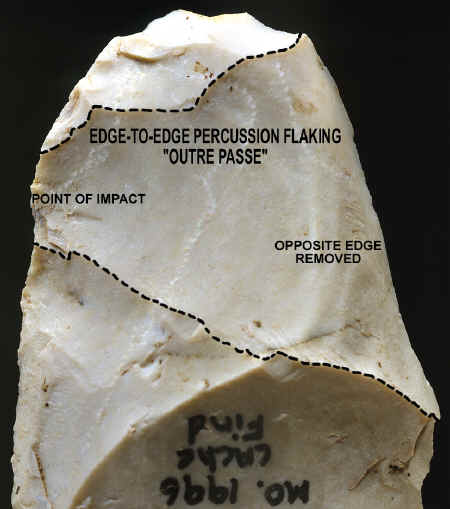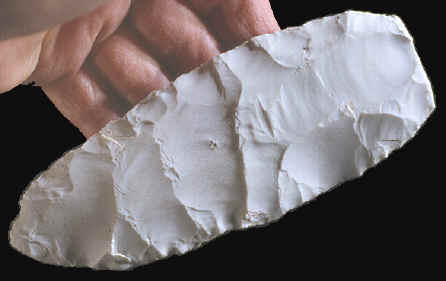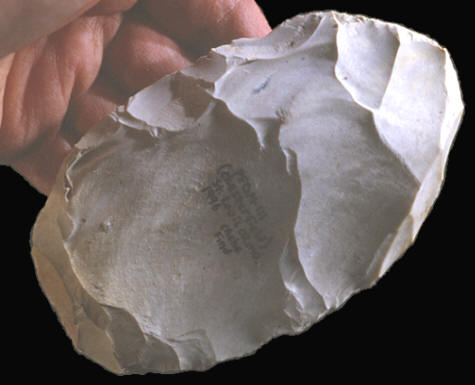|
|
|
The McKinnis cache contains 23 stone artifacts. Twelve of these artifacts are flakes or blades struck from cores. The remaining eleven artifacts are bifaces. All of the bifaces and nine of the core blades are made of good quality white Burlington chert. The other three flakes are made of a colorful orange chert that is also of very good quality. |
|
|
The McKinnis cache was found in a lithic source area that has been supplying good quality raw chert to Stone Age cultures for 14,000 years. Twenty pieces of the cache are made of local Burlington chert. The outer surface staining on some of the core blades suggests that the chert was collected in local creeks. The three colorful orange flakes have not been positively identified. Donnie McKinnis has collected tons of raw chert from the area around the cache site, over a period of many years. He uses the stone for himself, as a flintknapper, and to sell to other flintknappers. But he says that he has not seen this orange variety of chert locally. Archaeologist Brad Koldehoff has suggested that these three flakes are made of Payson chert. The source for this chert is 100 miles to the north in Adams County, Illinois. Payson chert is reported from the Bostrom Clovis site which is located approximately 30 miles south east of the Mckinnis cache site. |
|
|
Large core blades are one of the signatures of Clovis stone tool manufacturing technology. The McKinnis cache contains several large core blades. The twelve flakes in this cache range in size from 5 1/4 inches (13.3 cm) for the longest and 2 1/8 inches (5.3 cm) long for the smallest. The three colorful orange flakes in this cache represent the smallest of the twelve flakes. One of them is a good example of a secondary core blade. It is thin and has a dorsal ridge with two previous flake removals. Some of these blades were apparently used for cutting or scrapping as indicated by small micro-flakes and pressure flaking on some of the edges. One of the blades has been steeply trimmed on a portion of an edge (1 1/8 inches (2.7 cm), suggesting that it's intended use was for scrapping. |
|
|
|
|
Two or three of the largest core blades in this cache are primary core trimming flakes. They represent the initial core reduction process and have cortex on the dorsal surface. Several of the flakes in this cache are secondary core trimming flakes. They are smaller and thinner than the primary flakes and have one or more dorsal ridges from previous flake removals. |
|
| CONTINUE ON TO PAGE THREE | |
|
"REFERENCES" 1912,
"Handbook Of American Indians North Of Mexico," pp. 178, 179. |
|



